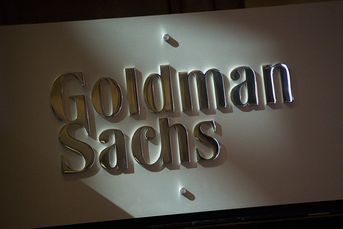Interest rates will resume ‘old normal’ stability — we did the math
Contrary to a popular belief that interest rates are destined to rise significantly, we may be re-entering the “old normal,” where the U.S. Treasury 10-year yield remains between 2% and 4% for an extended period.
Contrary to a popular belief that interest rates are destined to rise significantly, we believe we may be re-entering the “old normal,” where the U.S. Treasury 10-year yield remains between 2% and 4% for an extended period of time. We looked at data from 1871 to 1965, and found that Treasury bond interest rates were generally between 2% and 4% with an average rate of 3.57% during that period. Based on this, we argue the late 1970s were unusual and the decline during the last 32 years is simply a return to the “old” normal, where rates may remain for many years in a setting of slower growth and low inflation.
In a March 1, 2013, speech, former Federal Reserve Chairman Ben S. Bernanke spoke on long-term rates, stating: “The fact that market yields currently incorporate an expectation of very low short-term real interest rates over the next 10 years suggests that market participants anticipate persistently slow growth and, consequently, low real returns to investment. In other words, the low level of expected real short rates may reflect not only investor expectations for a slow cyclical recovery but also some downgrading of longer-term growth prospects.”
(See also: ‘New normal’ growing old: Pimco)
WHERE WE GOT OUR NUMBERS
How do we get to our 2%-4% range? A glimpse into two numbers — inflation and real returns on intermediate government bonds — may help the casual observer understand our outlook. First, let’s look at inflation and the many ways it is measured. The Federal Reserve has a stated target of 2% nominal inflation. According to the Bureau of Labor Statistics, 12-month trailing inflation before seasonal adjustment increased 1.1% for the month of February as measured by the Consumer Price Index for All Urban Consumers. As measured by personal consumption expenditures, what the Fed focuses on, inflation was 0.9% as of Feb. 28. As of March 31, Treasury inflation-protected securities are pricing in 1.87% inflation over the next five years and 2.14% inflation over the next 10 years.
Second, we looked at real returns. Our research suggests a real (in addition to inflation) return of 2% on intermediate government bonds is appropriate. As Mr. Bernanke noted in March 2013, we have recently been below that 2% real return rate and may stay below it for some time.
Now for the math. Taking the low estimates of inflation, hovering around 1%, and adding in real returns of 1%, we get a target U.S. Treasury 10-year yield of 2%. Taking the high end of the estimates, the 2% inflation estimate plus the 2% real returns estimate, nets a U.S. Treasury yield target ceiling of 4%, with some room for lower yields. This informs our outlook of 2% to 4% rates for the Treasury 10-year yield for the foreseeable future.
We contend many investors are misjudging the magnitude of future interest rate levels. This may be related to behavioral biases such as “groupthink,” anchoring from previous forecasts and belief perseverance. A majority of today’s investors have lived through an environment of historically high interest rates and remember the high inflation rates of the late 1970s and early 1980s. These historical biases may be driving investors’ views about future interest rates, even though we see an economic backdrop pointing toward a return to the “old normal.”
We believe interest rates are driven primarily by inflation expectations, which in turn are related generally to economic activity, particularly heightened growth environments. Our view is that economic growth over the next three to five years will generally be in a 1%-3% annual growth range, lower than historical norms, and not enough to result in a significant change in inflation expectations. We believe this for a few reasons.
First, despite the Fed’s aggressive stimulus over the past five years, we are not experiencing above-normal inflation, which at 1.1% as mentioned above is below the five-year average of 2%. GDP growth has remained anemic, and, although some improvement has occurred in the past couple years, it is still not at historic levels. Second, the velocity of MZM (the number of times that the money supply turns over in a year), used by the Fed and economists as one indicator of future inflation, suggests there is no near-term risk of inflation. The velocity of MZM is currently at 1.4, an all-time low, indicating economic activity remains low to moderate at best.
INFLATION FROM QE NOT A CONCERN
Finally, it is worth noting that many monetarists have concerns regarding the Fed’s quantitative-easing programs. Some monetarists believe the programs lead to a heightened risk of excessive money supply, which could potentially lead to inflation. We don’t see this as a concern. First, let’s look at bank excess reserves, which have grown from $0 in 2008 to around $2.5 trillion today. This number suggests that, despite the Fed’s efforts, money supply is locked within the banking system and not entering the real economy. Accordingly, the inflation predicted by monetarists has not occurred.
Further, in 2008 the Fed held $400 million in Treasury securities. Today it holds about $2.3 trillion, indicating that most of the reserve creation has financed the Treasury and not resulted in bank lending.
Finally, a closer look shows that bank lending has not grown meaningfully since the beginning of the so-called Great Recession. In October 2008, loans and leases in bank credit was $7.23 trillion. This number is currently $7.53 trillion, reflecting an anemic annual growth rate of 0.7% and further suggesting that monetarists’ concerns over “money creation” and inflation may be unwarranted. This is not to say that at some point reserve money may make its way into the system, however, we doubt this will happen anytime soon. For the time being we conclude that the current monetary policy is not inflationary.
Jerry Paul and Zach Jonson are portfolio managers at ICON.
Learn more about reprints and licensing for this article.








